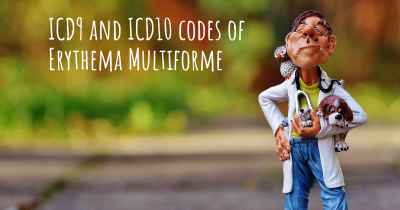What is the life expectancy of someone with Erythema Multiforme?
Life expectancy of people with Erythema Multiforme and recent progresses and researches in Erythema Multiforme

Erythema Multiforme (EM) is a self-limiting skin condition characterized by target-like lesions. The prognosis of EM varies depending on its underlying cause and severity. In most cases, EM is triggered by infections or medications, and it typically resolves within a few weeks to months. With appropriate treatment and management of the underlying cause, the majority of individuals with EM have a good prognosis and can expect a normal life expectancy. However, in rare cases, severe forms of EM, such as Stevens-Johnson syndrome or toxic epidermal necrolysis, can occur, which may have a higher risk of complications and impact life expectancy. It is crucial to consult a healthcare professional for accurate diagnosis, treatment, and monitoring of EM.
Erythema multiforme (EM) is a relatively rare skin condition characterized by the development of distinctive skin lesions. It is typically triggered by an immune response to certain infections or medications. The severity and prognosis of EM can vary widely depending on various factors, including the underlying cause, the individual's overall health, and the promptness of medical intervention.
Clinical Presentation:
EM is characterized by the presence of target-like skin lesions, which typically appear on the extremities, face, and trunk. These lesions can vary in size, shape, and color, and are often accompanied by other symptoms such as fever, malaise, and joint pain. In some cases, EM can also affect mucous membranes, leading to oral or genital ulcers.
Causes and Triggers:
The exact cause of EM is not fully understood, but it is believed to involve an abnormal immune response. The condition can be triggered by various factors, including:
- Infections: EM is commonly associated with infections, particularly herpes simplex virus (HSV) and Mycoplasma pneumoniae. Other viral, bacterial, and fungal infections can also trigger EM.
- Medications: Certain medications, such as antibiotics, anticonvulsants, and nonsteroidal anti-inflammatory drugs (NSAIDs), have been linked to the development of EM.
- Other factors: EM can also be triggered by exposure to certain chemicals, environmental factors, or even physical trauma.
Prognosis:
The prognosis for individuals with EM can vary depending on several factors. In most cases, EM is a self-limiting condition that resolves within a few weeks to months. The acute phase of EM typically lasts for 2-6 weeks, during which the skin lesions may progress and evolve. However, with appropriate treatment and management, the majority of individuals recover without long-term complications.
Treatment and Management:
The primary goal of treatment for EM is to alleviate symptoms, promote healing, and prevent complications. The specific treatment approach may vary depending on the underlying cause and the severity of symptoms. In mild cases, symptomatic relief can be achieved through the use of topical corticosteroids, antihistamines, and analgesics. In more severe cases, systemic corticosteroids or other immunosuppressive medications may be prescribed.
Complications:
While most cases of EM resolve without complications, there can be rare instances where complications arise. These may include:
- Recurrence: Some individuals may experience recurrent episodes of EM, particularly if the underlying trigger is not identified or managed effectively.
- Stevens-Johnson syndrome (SJS) and toxic epidermal necrolysis (TEN): In rare cases, EM can progress to more severe forms, such as SJS or TEN. These conditions are associated with widespread skin detachment and can be life-threatening.
- Organ involvement: In severe cases, EM can affect internal organs, leading to complications such as hepatitis, pneumonitis, or nephritis.
Conclusion:
Erythema multiforme is a skin condition characterized by distinctive target-like lesions that can be triggered by various infections, medications, or other factors. While the prognosis for most individuals with EM is generally favorable, it is important to seek prompt medical attention and appropriate treatment to alleviate symptoms, prevent complications, and ensure a speedy recovery. If you suspect you may have EM or have concerns about your health, it is always recommended to consult with a healthcare professional for an accurate diagnosis and personalized treatment plan.
Posted May 29, 2017 by Krista 2270
Posted Apr 4, 2018 by Alicia 2800








